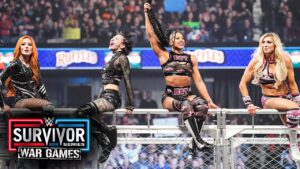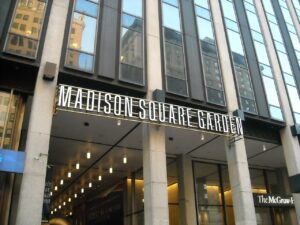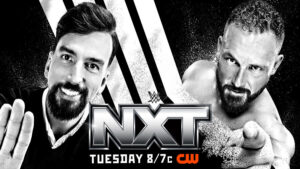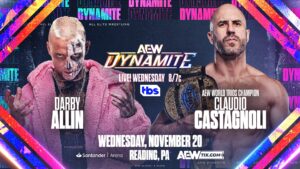This morning, news broke from Australia that WWE is looking to do a major show from Melbourne on Saturday October 6th, in the Melbourne Cricket Ground, which can hold 100,000 people. While Australia was not a prime market for wrestling from the 1980’s to the early 2000’s, before that it was one of the best. And it bore a moniker very similar to American wrestling fans: World Championship Wrestling.
The Original WCW: The Glory Days of Australian Pro Wrestling (VIDEOS)
Before the Monday Night Wars, before Ted Turner purchased a bleeding company, and even Georgia Championship Wrestling’s TV show, there was an original World Championship Wrestling. This federation, however, was not based out of Atlanta, but Australia. Yes, Australia was once the home of one of the most profitable territories in the world, and the company ran shows from 1964-1978. During its heyday, it was the most watched sport on Australian television, achieving a rating of 14 on Aussie TV, according to WCW commentator Mike Cleary.
“I used to line up at 7AM on either a Saturday or Sunday morning at the gates of GTV9 in Richmond…At the end, we would rush home to watch it on TV…Great memories.” John Michailidis, age 53
Weekly television was the biggest reason for the popularity of WCW, with time slots every Saturday and Sunday at noon on Channel 9. These shows, featuring Italian superstars Dominic DeNucci and Mario Milano, and Greek superstar Spiros Arion, appealed to the ethnic populations in some of the major cities, like Bruno Sammartino did in Boston’s North End.
“I watched religiously…Was absolutely terrified when I heard that Abdullah was coming and they did promos saying that he had actually killed men in the ring.” David Brewer, age 56
However, like every defunct wrestling promotion, it had its down spin. After a change in ownership in late ’73, things took a turn for the worst, and ultimately lead to its death in ’78. The story and the legacy of this promotion, like most wrestling stories from that time, begin with one of the business’ most unique backstage personalities: Jim Barnett.
Jim Barnett cut his teeth in the industry under Fred Kohler in his Chicago-based promotion, which, coincidently, had national TV in the early 50’s on the Dumont Network. It was through his position with Kohler that Barnett began making his numerous contacts in the business, that eventually become one of his more important assets. Soon, he began promoting his own shows, in places like Denver and Indianapolis, amongst others. Once in Indianapolis, as retold by Dave Meltzer, Barnett had promoted a huge house show, headlined by a battle royal, in which Dick the Bruiser and Wilbur Snyder were booked to wrestle. However, before the show, the Bruiser and Snyder came up to Barnett, and told him that if he didn’t include them on the business side of the territory as co-promoters, they would walk out and no-show the event. Barnett, aghast by the power play, but feeling cornered by the circumstances, gave in. It was an event some believe influenced Barnett’s booking in Australia, by always relegating the Australians to the mid-card with the foreigners on top. This way, the homegrown talent couldn’t make a power play like that, and the top guys, who were usually only there for a few months anyway, simply wouldn’t. Nonetheless, Barnett had wanted to do a national promotion, some report, and since the United States would have been an insanely difficult place to do it, he looked elsewhere. He had heard that Australia might be just the place.
Australia, of course, had its own wrestling tradition, dating back as far as 1880, even seeing George Hackenschmidt tour the country in the early days. Often, though, the wrestling cards were merely wrestling main events, with boxing undercards, and even the wrestling matches were composed of timed rounds, like boxing. WCW’s American style of time limits instead of rounds meant more action per match, and entire wrestling cards instead of just a match or two meant more performers working more often.
In 1964, Barnett and fellow American promoter Johnny Doyle, visited Australia, and were able to secure a TV on Channel 9, due to Doyle’s connection with Jack Little, who worked for the station. Little had done commentary for Doyle in America in the 40’s, and was actually the one who recommend to Doyle and Barnett to venture into Australia in the first place. They also visited with Dick Lean, Sr, who ran the stadiums that Barnett and Doyle were looking to run: Sydney Stadium, Festival Hall in Melbourne, and Festival Hall in Brisbane. Needing local talent as well, the two struck up a deal with Hal Morgan, promoter of local Club Pro Wrestling, who supplied them the Australian wrestlers they needed. Although, due the aforementioned incident in Indianapolis, Barnett was sure to make foreigners his top stars. With television, venues, and local performers secured, World Championship Wrestling ran its first show in Sydney Stadium on October 23rd, 1964, drawing 6,500 people. Two weeks later, on November 7th, before a crowd of 8,000, the promotion saw its first major title change, as the Italian babyface Dominic DeNucci defeated Killer Kowalski to become the IWA Heavyweight Champion. However, Barnett and Doyle did not have a complete monopoly on pro wrestling in Australia at the time. George Gardiner, who promoted Big Time Wrestling, and had promoted on and off since 1937, continued to run shows, and did not back down to Barnett’s and Doyle’s soon to be juggernaut.
Come 1965, WCW was by far the most popular wrestling promotion in the country, as the TV exposure propelled to their place at the top. Their attendance progressively increased throughout the year, culminated with 14,000 people attending a show on December 3rd. In terms of booking, DeNucci started the year at the top champion, briefly lost it to Ray Stevens to heat up their feud, and won back from him a short time later, in a resurrection of their feud from Roy Shire’s promotion in San Francisco. Kowalski won it from DeNucci to be a transitional champion so they could get the belt on Spiros Arion, the Greek babyface who would close out the year as champion.
“I went to Sydney Stadium with my father, grandfather, and brother…and got so upset with Killer Karl Kox and threw a mintie at him, security came and spoke to my grandfather and me. I was well behaved after that but still upset, I will never forget that night.” Sarge Buko, age 10 at the time
Nineteen sixty-six saw the first major promotional shots fired. George Gardiner of Big Time Wrestling managed to get Arion, WCW’s new top star, to jump ship to his promotion and defend his IWA Heavyweight title, WCW’s top belt, on two different shows, in Sydney and Melbourne (the Sydney show saw a Dusty finish and the crowd nearly rioted until the match was awarded to Arion to appease them). WCW, to cover the fact that their champion bailed, fictionalized a story about Killer Kowalski beating him Honolulu for the title previously. Barnett and company soon retaliated. George Gardiner had, from the end of the 1965, been trying to book Bruno Sammartino from the WWWF. WWWF agreed, stating that Gardiner had to guarantee Bruno either $10,000 per week or 25% of the gate, whichever was greater, huge money at the time. But Barnett caught wind of this, and Bruno then was “accidentally” double-booked on the dates promised to Gardiner, and therefore never made it to Big Time Wrestling. He did, however, make it to two showings of WCW in April and September of that year, and was indeed paid huge money, although Barnett would later say that Bruno was worth it because he drew so well.
However, Spiros Arion would return to WCW that fall, and against WCW’s TV time, Gardiner’s promotion would continue to be the B company in the country. In November, just over two years after their first show, WCW’s cumulative attendance had reached one million. During that same year, Paulette Giret and Efride Dengler were booked to be the first women wrestlers on an Australian card, but sadly the police prevented this from happening. Eventually, WCW did book women in the ring, but they were never promoted for big angles as Barnett was not a fan of women’s wrestling. The female workers were paid much less than the men, weren’t featured on TV as nearly as much, and never had an opportunity to shine. But the names of Giret and Dengler, along with Sherrie Sinatra, Sabrina, Lucille Dupre, Princess Little Cloud, Barbara Owens, Donna Christanello, and Patty Ryan should be remembered as trailblazers for women’s wrestling in Australia.
Financially, World Championship Wrestling had hit its stride and was at one point in the 60’s was the largest promotion in the world. Barnett still played favorites with the foreign talents, and the local workers were paid less and stuck in perpetual mid-card status. He also required the wrestlers to always travel in their Sunday best, although that didn’t prevent them from partying a little too hard and leaving Barnett to try and keep it from the media when things got out of hand. In the early years of the promotion, Barnett and Doyle would trade off every six months as the boss in Australia, while the other could go home to America. In 1968, though, Doyle left the promotion, and passed away on October 9th, 1969 due to cancer. Barnett was the sole proprietor in charge. Without Doyle, Barnett sought to join the National Wrestling Alliance, and in 1969 became a member, and in 1970 officially recognized the NWA World’s Heavyweight Championship as the real world title, foregoing his own IWA Heavyweight Championship. Also at the end of ’69, Barnett hired on George Gardiner, effectively ending the only real completion WCW had in Australia at the time.
Since WCW’s business also ventured into Singapore, New Zealand, and Hong Kong, and since the promotion couldn’t have a world champion because it was an NWA member, Barnett created the Austra-Asian Heavyweight Championship in 1972, and was the company’s top title, albeit subservient to the NWA World’s Heavyweight title. It was around this time, however, that some political changes were coming to Australia. The tax code changed, making it more expensive for Barnett to run WCW; and the new government required that all Australian companies be composed of at least 51% Australians. On top of that, Channel 9, on which WCW had been airing for years, decided that the current product was much too violent, and decided to no longer broadcast the shows live, so that they could edit the footage if need be. Barnett hated this. So Barnett began looking to sell off WCW, and to buy back in to the American circuit. Furthermore, by the end of 1972, business had begun to taper. However, in 1973, while he started looking to get out of Australia, Barnett began blowing off of his big storylines, presumably to ensure that was around when his share of the percentage came in for those shows. Additionally, he concocted the most famous angle in WCW’s history: The War. Beginning in April and lasting until the fall, The War saw groups form around Mark Lewin, the babyface leader, and Big Bad Jon, the heel leader. The feud was marked by its violence, blood, and brawling, highlighted by either 6-man or 8-man cage matches. While the rosters of the respective teams changed, the main babyfaces, known as the People’s Army, in addition to Lewin were Spiros Arion, Sheik Ayoub, King Curtis, Mario Milano, and Karl Kox, while the heels were Waldo Von Erick, Bulldog Brower, Hiro and Hito, Abdullah the Butcher, Tyler Singh, Blackjack Slade, and others. The angle was a financial success, although business dipped towards the end because of how long and intense it was. Also during the year, the NWA World’s Champion Jack Briscoe had four different titles defenses during his visit. Barnett had used up every major angle in the territory, and squeezed as much out of this year as he could. All in all, Barnett had booked 1973 as the most fiscally successful year in the history of WCW. And then he sold his shares in December, and was gone by the new year. Thus was the beginning of the end for World Championship Wrestling.
The had been a promotional war going on in Georgia, and and one of the promoters there was looking to bring in the right guy to win it. It was there Barnett had found his out from Australia, and bought in to Georgia Championship Wrestling. He had sold controlling interest to Tony Kolonie, an American businessman who made the purchase through he and Barnett’s mutual acquaintance Eddie Graham. Kolonie had no knowledge of wrestling. His brief run as the promoter is regarded as a failure, although the one positive he did accomplish was to bring in Andre the Giant, who always created good business wherever he went. Kolonie didn’t have the international wrestling contacts that Barnett had, so he had to make do with the talent he had, which meant that the roster got very stale very quickly. The promotion was dying. When the time came for the TV contract to expire, the station did not negotiate a renewal, preferring instead to give the TV to cricket. The final episode of World Championship Wrestling aired on December 16th, 1978. What’s worse, almost none of the footage has survived. Film was not archived after airing in those days, and once tapes were introduced, they were taped other with another program the station was airing.
The legacy of WCW and its stars is a complicated one. After being so popular for so long, it essentially killed the wrestling business in Australia for over two decades after it closed down, and only recently returning to moderate prominence with promotions like Melbourne City Wrestling (MCW), Pro Wrestling Australia (PWA), and Explosive Pro Wrestling (EPW). Another local promotion runs an annual show named after Mario Milano, whom Dave Meltzer called “the single most famous wrestler in Australia” due to his WCW days. However, Shazza McKenzie, a current Australian wrestler, bravely came forward on Twitter recently, revealing on that Milano had groped her in front of a crowded locker room in 2010.
https://twitter.com/Shazza_McKenzie/status/1006060103231918080
As time keeps turning and WCW grows further and further into the past, its remembered less and less. But New Japan, PROGRESS, and with today’s announcement WWE, are all doing landmark shows in Australia in 2018, not to mention the rise to prominence of local promotions, most notably MCW. While World Championship Wrestling may be on the cusp of being forgotten, Australian wrestling is on the cusp of international acclaim, with WWE’s Super Show-Down in October leading the way.
The majority of the information in this article is from Libnan Ayoub’s DVD ‘Over The Tope Rope’ which can be found at http://overthetoprope.com.au







